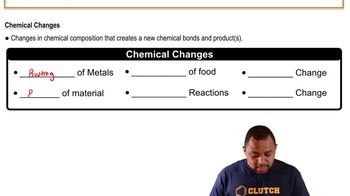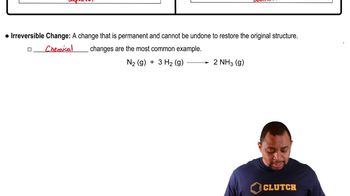Textbook Question
Name two changes of state and describe what causes each to occur.
 Verified step by step guidance
Verified step by step guidance Verified video answer for a similar problem:
Verified video answer for a similar problem:



 1:41m
1:41mMaster Physical and Chemical Changes with a bite sized video explanation from Jules
Start learning